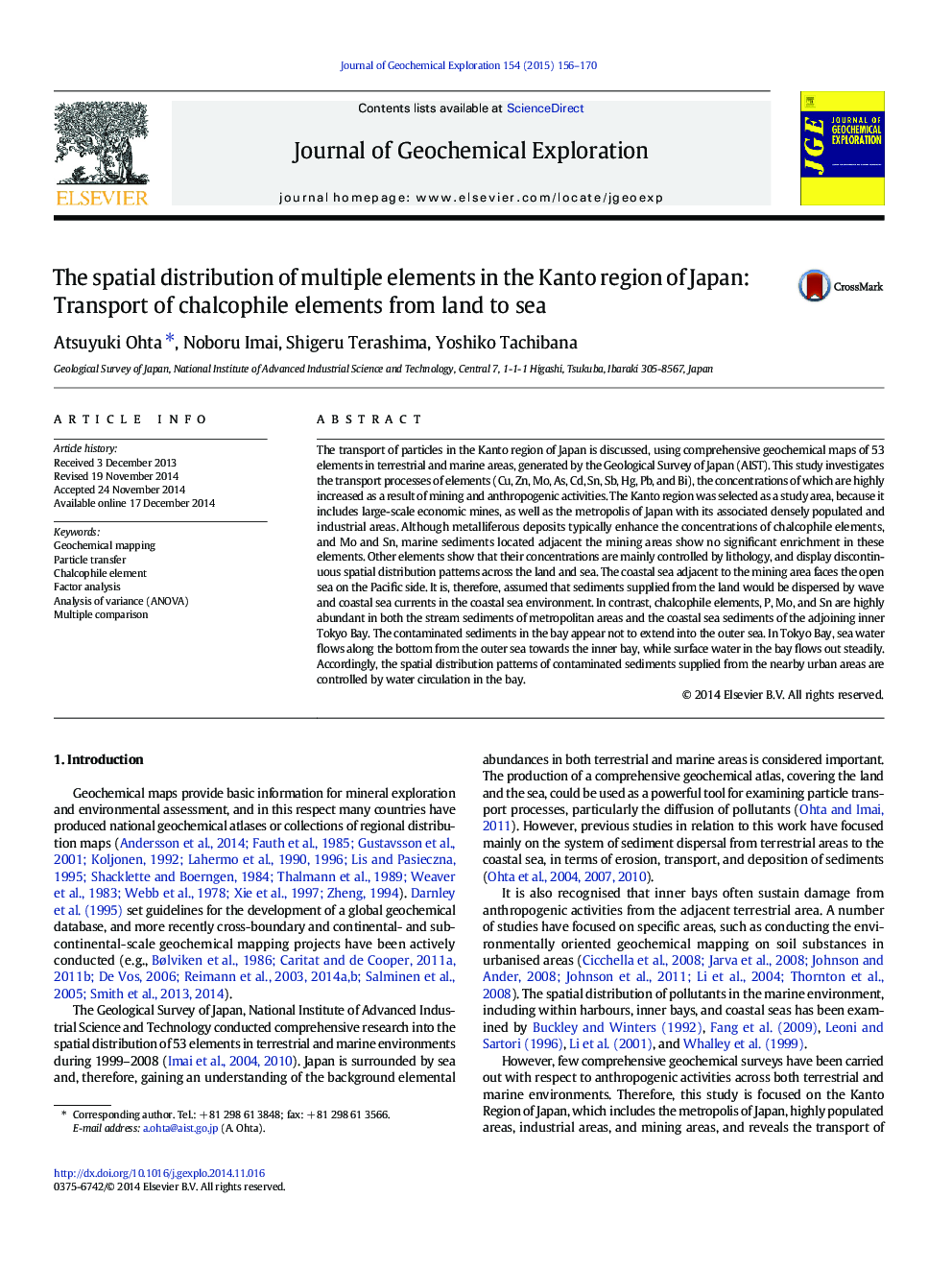| کد مقاله | کد نشریه | سال انتشار | مقاله انگلیسی | نسخه تمام متن |
|---|---|---|---|---|
| 4457110 | 1620905 | 2015 | 15 صفحه PDF | دانلود رایگان |
• We examined the spatial distributions of 53 elements in the Kanto region of Japan.
• Contaminated sediments remain within the bay without being dispersed to the outer sea.
• The estuarine water circulation in the semi-closed environment of the bay
• The spatial distributions of elements are discontinuous across land and the outer sea.
• The sediments on the continental shelf are dispersed by waves and coastal currents.
The transport of particles in the Kanto region of Japan is discussed, using comprehensive geochemical maps of 53 elements in terrestrial and marine areas, generated by the Geological Survey of Japan (AIST). This study investigates the transport processes of elements (Cu, Zn, Mo, As, Cd, Sn, Sb, Hg, Pb, and Bi), the concentrations of which are highly increased as a result of mining and anthropogenic activities. The Kanto region was selected as a study area, because it includes large-scale economic mines, as well as the metropolis of Japan with its associated densely populated and industrial areas. Although metalliferous deposits typically enhance the concentrations of chalcophile elements, and Mo and Sn, marine sediments located adjacent the mining areas show no significant enrichment in these elements. Other elements show that their concentrations are mainly controlled by lithology, and display discontinuous spatial distribution patterns across the land and sea. The coastal sea adjacent to the mining area faces the open sea on the Pacific side. It is, therefore, assumed that sediments supplied from the land would be dispersed by wave and coastal sea currents in the coastal sea environment. In contrast, chalcophile elements, P, Mo, and Sn are highly abundant in both the stream sediments of metropolitan areas and the coastal sea sediments of the adjoining inner Tokyo Bay. The contaminated sediments in the bay appear not to extend into the outer sea. In Tokyo Bay, sea water flows along the bottom from the outer sea towards the inner bay, while surface water in the bay flows out steadily. Accordingly, the spatial distribution patterns of contaminated sediments supplied from the nearby urban areas are controlled by water circulation in the bay.
Journal: Journal of Geochemical Exploration - Volume 154, July 2015, Pages 156–170
